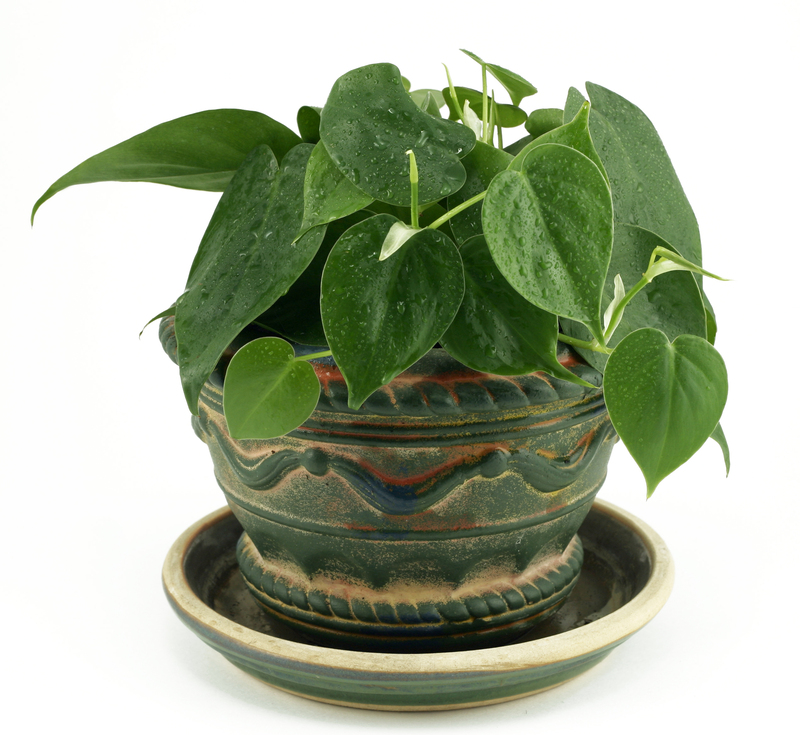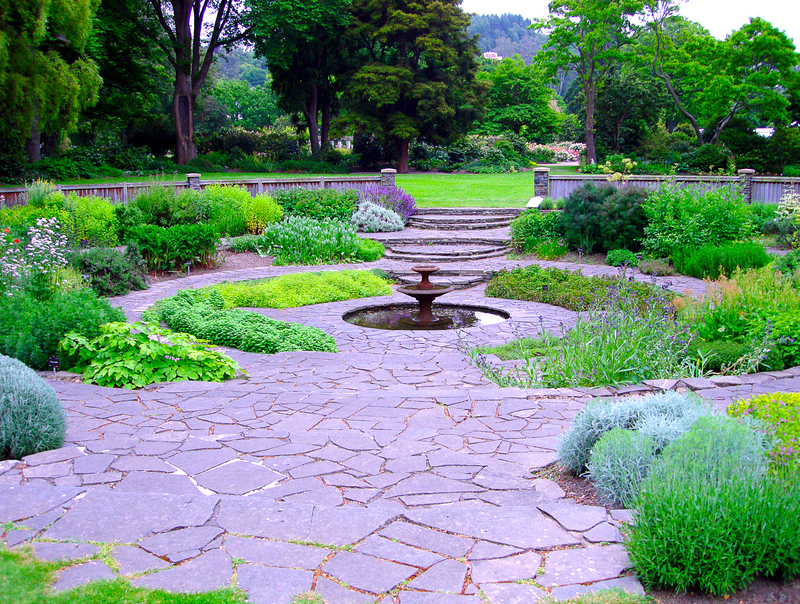Tips for Selecting Hardy and Colorful Plants for Window Boxes
Window boxes have a magical way of turning a plain facade into a charming and inviting space. Whether you're in an urban apartment or a country cottage, the right selection of hardy and colorful plants can make your window boxes burst with life and color all season long. But how do you choose the best plants for your window boxes that will not only thrive but also showcase an array of vibrant hues?
In this comprehensive guide, we'll provide valuable tips for selecting hardy and colorful plants for window boxes. Learn how to craft the perfect plant combination, ensure healthy growth, and create a display that delivers non-stop appeal, whatever the weather.
Why Choose Hardy and Colorful Plants for Window Boxes?
Hardy plants can withstand a range of environmental stresses--temperature fluctuations, wind, variable moisture--making them ideal for window boxes, which typically have less soil and are more exposed to the elements. Colorful plants guarantee visual excitement and can lift the mood of your home.
Let's dive into why these two factors are crucial for success:
- Weather Resistance: Hardy plants endure drought, wind, and cold snaps.
- Low Maintenance: These varieties need less care and bounce back quickly from minor neglect.
- Season-Long Color: Bright, vibrant plants maintain interest from spring through fall.
- Curb Appeal: Colorful window boxes add value and charm to any property.

Consider the Growing Conditions
Assessing Sunlight Exposure
Before choosing any window box plants, analyze the amount of sun the area receives daily:
- Full Sun: At least 6 hours of direct sunlight, ideal for sun-loving varieties like petunias and geraniums.
- Partial Shade: 3-6 hours of sun, suitable for impatiens, begonias, and coleus.
- Full Shade: Less than 3 hours, suits ferns and some types of ivy.
Tip: Observe the window at morning, midday, and afternoon for a couple of days to get an accurate sunlight reading.
Understand Temperature Fluctuations
Window boxes are more exposed to weather extremes than in-ground gardens. Consider hardy plants that thrive in your specific climate and keep the following in mind:
- Urban Heat: Brick and concrete can increase temperatures.
- Wind Exposure: Upper floors face stronger winds. Opt for sturdy plants that don't topple easily.
- Frost Risk: In cold regions, use frost-tolerant species, especially before risk of late spring or early autumn frost has passed.
Soil and Drainage
Soil in window boxes dries out faster than in the ground. Use high-quality potting mix and ensure good drainage. Add slow-release fertilizer for ongoing nourishment.
Plant Selection Strategies
Go for Proven Winners: The Best Hardy and Colorful Varieties
Some plants simply excel in window boxes, offering reliable color and toughness. Here are the top choices:
- Geraniums (Pelargonium): Brilliant reds, pinks, and whites; drought and heat tolerant; perfect for sunny spots.
- Petunias: Wide range of colors; trailing and upright forms available.
- Calibrachoa (Million Bells): Prolific small blooms, withstands summer heat beautifully.
- Bacopa: Trailing white or lavender flowers; tolerates shade to sun.
- Begonias: Hardy, shade-loving, and delightfully colorful.
- Coleus: Spectacular foliage in reds, yellows, pinks; thrives in partial shade.
- Pansies & Violas: Early spring and fall color; cool-season stamina.
- Sweet Alyssum: Honey-scented clusters of white or purple; drought-tolerant.
- Ivy (Hedera helix): Variegated trailing foliage, a great backdrop for flowers.
- Dwarf Marigolds: Golden yellow and orange; pest-resistant and sun-loving.
Incorporate Foliage for Contrast and Texture
Not all color comes from blooms! Mixing in hardy foliage plants adds artistry to your window box displays:
- Heuchera (Coral Bells): Ruffled leaves in burgundy, copper, and lime green.
- Dusty Miller: Silvery leaves accentuate vibrant flowers.
- Lamb's Ear: Soft, gray leaves; very drought-hardy.
Think in Layers: Thrillers, Fillers, and Spillers
For maximum effect, use the "thriller, filler, spiller" method:
- Thriller: A bold, upright plant for height (ex: geranium, ornamental grass).
- Filler: Medium plants to create fullness (ex: petunia, coleus).
- Spiller: Trailing varieties that drape over the edge (ex: bacopa, ivy, sweet potato vine).
Tip: Plant in odd numbers for a more natural look.
Choose Perennials for Long-Term Boxes
If you want a window box that lasts beyond a single season, select hardy perennials like evergreen ferns, heuchera, and dwarf grasses. They provide year-round color and structure, needing only a seasonal refresh with annuals.
Designing Your Window Box for Maximum Impact
Color Coordination and Themes
Combining colors skillfully enhances curb appeal. Here are some approaches:
- Bold Contrasts: Pair purple petunias with yellow marigolds.
- Monochrome Magic: Stick to one color for a modern vibe--think all-white begonias or fiery reds.
- Cottage Charm: Mix soft pastels like pink geraniums and lavender calibrachoa.
- Seasonal Switch: Add pansies and violas in early spring/fall, switch to sun-loving blooms in summer.
Balance and Proportion
Keep your window box arrangements balanced:
- Height at the back, trailing plants at the front
- Mix textures--combine fine-leaved and broad-leaved varieties
- Odd-number groupings for a relaxed, natural feel
- Leave space for growth so plants don't smother each other
Seasonal Choices for Year-Round Color
Plan your planting to keep colors coming throughout the year:
- Spring: Pansies, violas, and bulbs like dwarf daffodils (Tete-a-tete)
- Summer: Petunias, geraniums, marigolds, calibrachoa
- Fall: Ornamental kale, heuchera, dwarf grasses, mums
- Winter: Hardy evergreens, ivy, heather
Maintenance Strategies for Hardy and Colorful Window Box Plants
Watering Wisely
Window boxes often dry out quickly, especially in sunny or windy locations. Here's how to keep your plants healthy:
- Check Soil Daily: Water when top inch feels dry.
- Water Early or Late: Morning or evening is best to minimize evaporation.
- Avoid Overwatering: Ensure drainage holes are never blocked.
- Use Mulch: Helps retain soil moisture and keeps roots cool.
Regular Feeding and Deadheading
Most vibrant window box plants are heavy feeders:
- Feed Regularly: Use a balanced liquid fertilizer every two weeks.
- Deadhead Spent Blossoms: Pinch off faded flowers to promote new blooms.
- Prune Trailing Plants: Keep spillers from becoming scraggly with occasional trims.
Replacing and Rotating
Swap out weak, overgrown, or battered plants for fresh annuals or foliage as needed. Don't be afraid to experiment!
Special Considerations for Different Climates
Hot and Dry Regions
- Choose drought-tolerant plants: Geraniums, marigolds, lantana, portulaca.
- Use self-watering window boxes or add water-retaining crystals to soil.
Cold and Wet Regions
- Pick frost-hardy plants: Pansies, violas, dwarf evergreens.
- Avoid waterlogging: Elevate boxes slightly and use porous soil mixes.
Urban Environments
- Shield from strong winds: Opt for compact, sturdy varieties and add support if necessary.
- Consider pollution tolerance: Ivy and dusty miller are excellent choices.
Inspiring Window Box Plant Combinations
Get creative by trying one of these hardy and colorful window box plant combinations:
-
Sunny Summer Sizzle:
Pink geraniums, yellow million bells, trailing white bacopa, and silver dusty miller. -
Shady Sanctuary:
Red and lime coleus, white impatiens, trailing ivy, and green ferns. -
Autumn Fireworks:
Heuchera in ruby tones, gold dwarf marigolds, small ornamental grasses, and purple pansies.

Frequently Asked Questions About Window Box Plant Selection
How many plants should I put in a window box?
The general rule is to plant almost one plant per every 6 inches of box length. Crowding can lead to poor airflow and disease, so allow space for growth.
Can I grow vegetables and herbs in window boxes?
Absolutely! Hardy, compact varieties like cherry tomatoes, basil, chives, parsley, and lettuces do well in window boxes--plus, they add edible color and texture.
How often should I replant my window boxes?
Most annuals last a single season. Refresh your display with each new season, or use perennials and evergreens for longer-term arrangements.
What is the best way to ensure continuous color?
Mix plant varieties with staggered bloom times and foliage interest. Replace spent annuals and keep up with fertilization and deadheading.
Conclusion: Creating Stunning, Resilient Window Boxes
With thoughtful selection and care, you can enjoy hardy and colorful plants for window boxes from early spring until frost. Remember to choose varieties based on your site's light, climate, and design goals. Mix textures, heights, and hues for arrangements that delight every passerby and homeowner alike.
By following these tips for selecting hardy and colorful plants, you'll have window boxes that are not only beautiful but also resilient and easy to maintain. Let your creativity shine, experiment with new combinations, and transform your windows into lush, long-lasting displays of natural art.